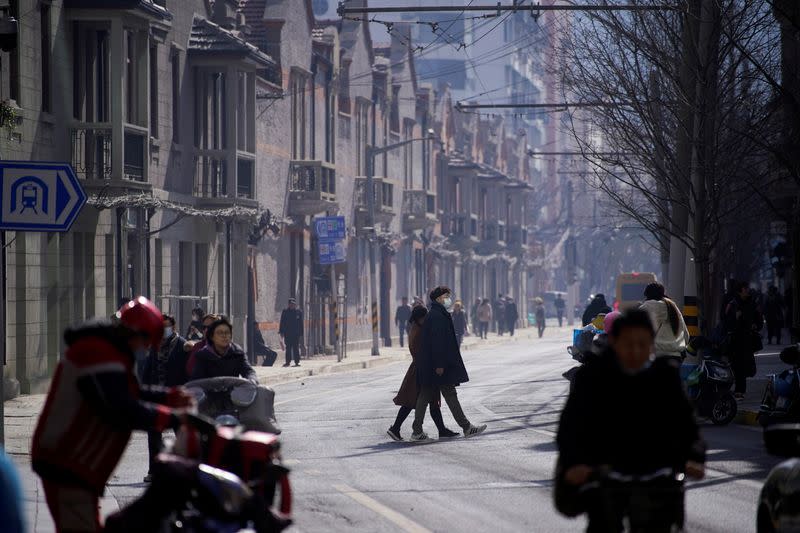BEIJING (Reuters) – China recorded the highest number of daily cases of COVID-19 in more than 10 months, according to official data released on Friday, due to a severe outbreak in the northeast that left more than 28 million people under block .
A total of 144 new cases of COVID-19 were reported on January 14, the National Health Commission said in a statement, up from 138 cases the previous day and marking the largest daily increase since 202 cases reported on March 1.
The total number of cases remains well below what China saw at the height of the outbreak in early 2020, but concerns about a new wave across the country are growing with a major national holiday a month from now and estimates of 296 million of rail passenger travel during the New Lunar Year Vacation.
The commission said 135 of the new cases were local infections, 90 of which were in Hebei province, near Beijing, which was hardest hit in the last wave. Another 43 cases have been reported in Heilongjiang province in the northeast, with Guangxi and Shaanxi provinces each reporting a confirmed case.
This increase occurs when a team of researchers led by the World Health Organization (WHO) is quarantined in the city of Wuhan, where the disease first emerged in late 2019. The team aims to investigate the origins of the pandemic that has killed almost 2 millions of people worldwide.
The delegation, which was awaiting Beijing’s authorization to enter the country late, faced another setback on Thursday when two of its members had to be left behind in Singapore after a positive test for antibodies to the coronavirus.
China currently encourages all travelers from abroad to report a negative result on a nucleic acid test and a negative serum IgM antibody test within 48 hours of entry as part of its COVID-19 prevention efforts.
Both members were negative in the nucleic acid test, but positive for IgM immunoglobulin M, antibodies and were prevented from flying with the rest of the team. IgM antibodies develop quickly after an infection and their presence may indicate that an active infection is still in progress.
WHO said the two individuals would be tested again.
DISCOURAGED TRAVEL
Authorities are encouraging the public to avoid non-essential travel during the Lunar New Year holidays next month, when hundreds of millions of Chinese typically return home or travel.
Heilongjiang, which has already declared the emergency of COVID-19, asked the 37.5 million inhabitants to stay put during the break and avoid meetings.
“The calls made by central and local authorities for people to avoid travel between regions during the holiday are sensible and necessary, because they are based on science and first-hand experience,” said the official China Daily in an editorial published on Friday. market.
“It is not just about protecting ourselves and our families, but also avoiding a clear and present danger to our immediate and wider communities.”
China Railway Deputy General Manager Li Wenxin expects about 296 million passenger rail journeys during the Lunar New Year holidays, Xinhua reported on Friday, compared with 410 million in 2019 – the last time in that there were no major restrictions on travel during the vacation period.
The number of new asymptomatic cases, which China does not classify as confirmed cases, dropped from 78 the day before to 66.
The total number of confirmed COVID-19 cases in mainland China is now 87,988, while the death toll has remained unchanged at 4,635.
The commission’s daily count excludes cases reported in Macau and Hong Kong, which are Chinese territories, but report their numbers separately. The commission excludes cases in Taiwan, the autonomous island that China claims to be its own.
(Reporting by Brenda Goh in Shanghai and Cate Cadell in Beijing; Written by Se Young Lee; Editing by Tom Hogue and Michael Perry)
